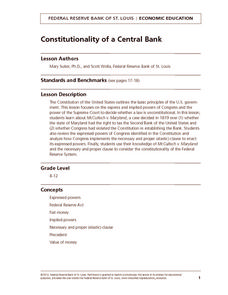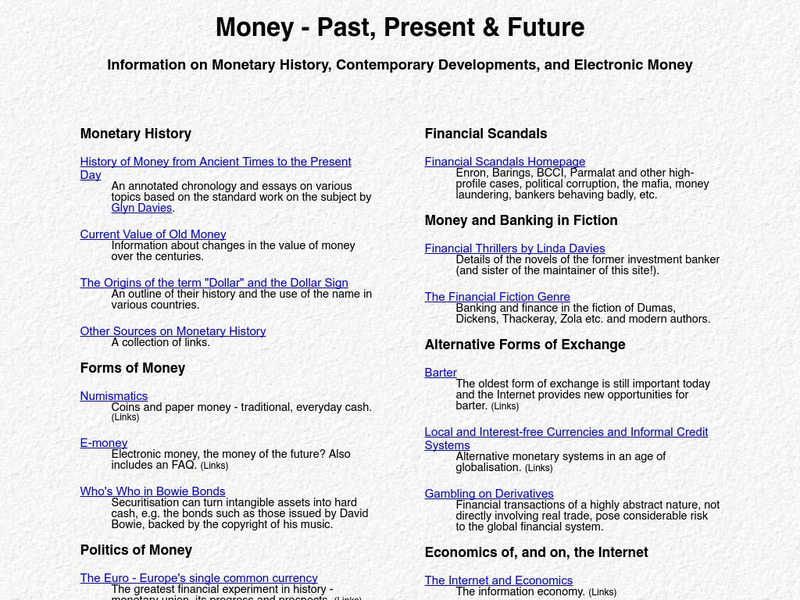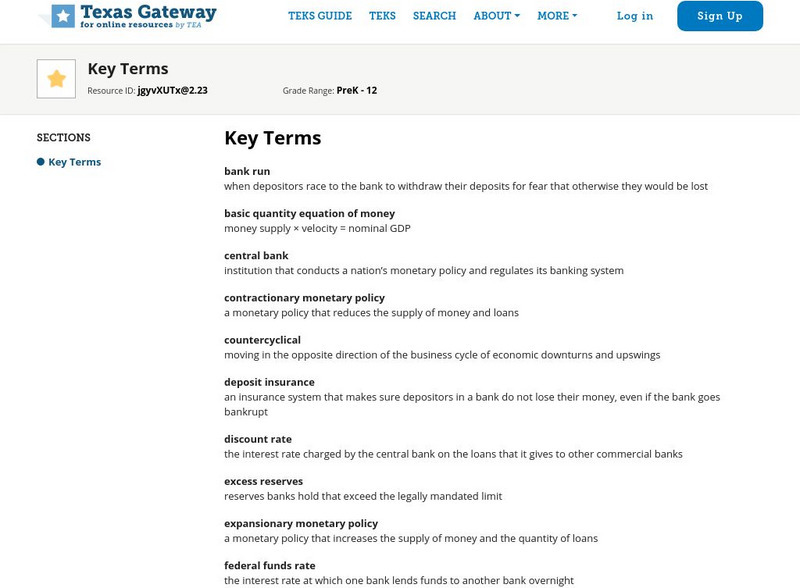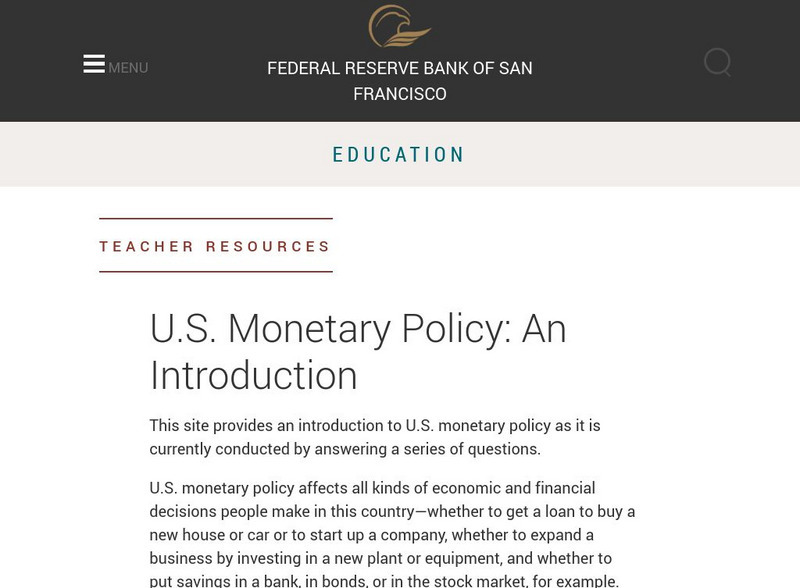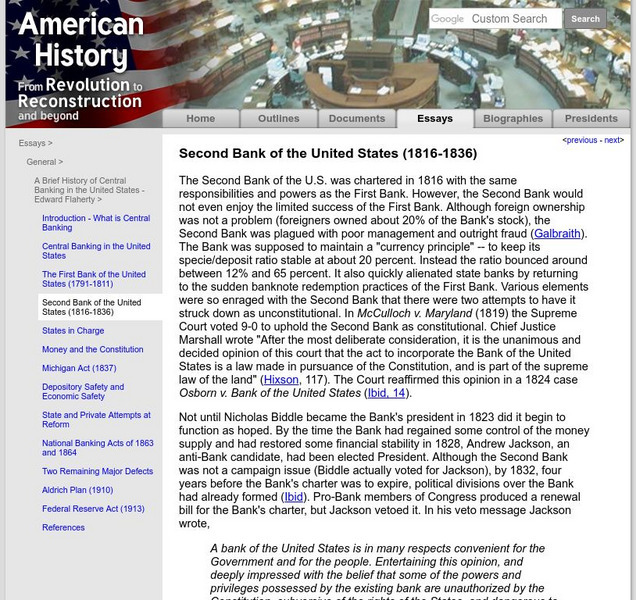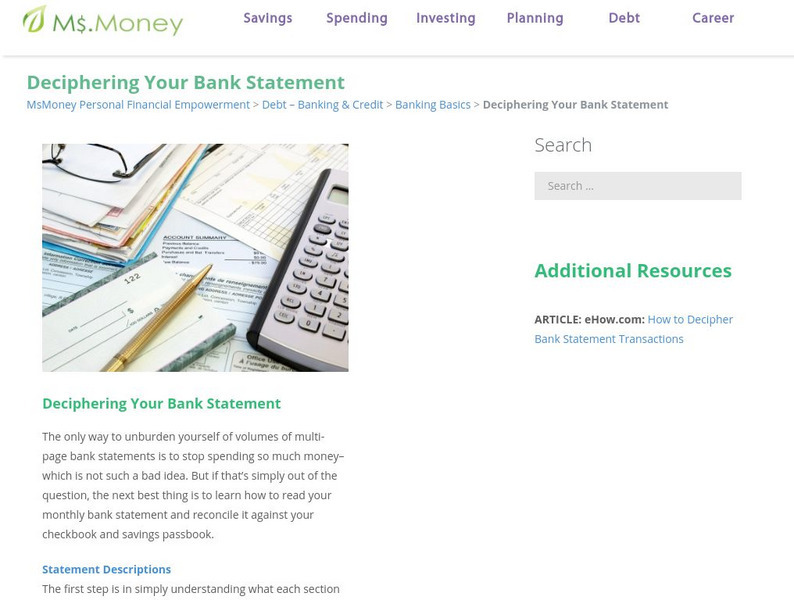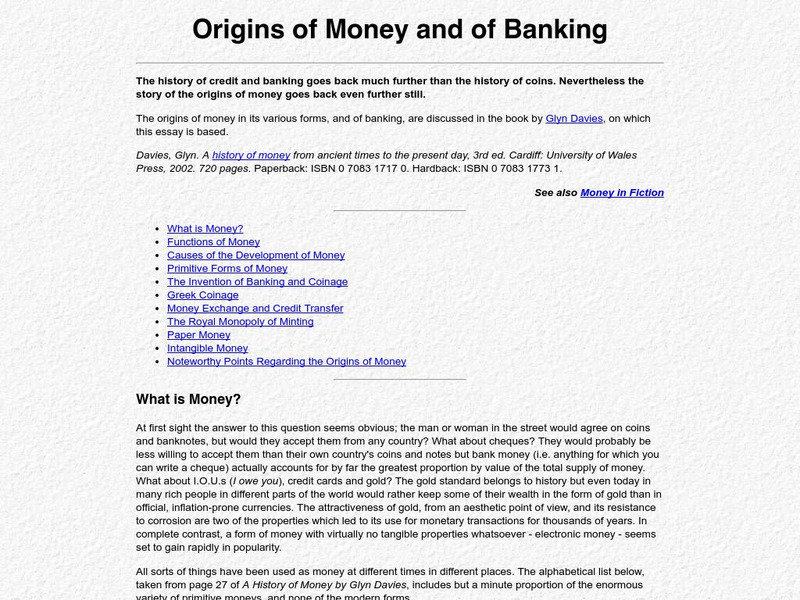Federal Reserve Bank
Constitutionality of a Central Bank
Considering the expressed and implied powers of Congress, was it constitutional for the United States to establish the Second National Bank in the early nineteenth century? What is the constitutionality of the Federal Reserve...
Curated OER
College Education
What do Bill Gates and Mark Zuckerberg have in common? They're both billionaires, and neither one has a college degree! Using the website, scholars explore whether having a college education is truly worth the money it costs. They read...
West Contra Costa Unified School District
Interest and the Number e
Mary, Mary, quite continuously, how does your money grow? Uses examples to examine the difference between simple interest and compound interest, and to take a look at different rates of compounding. Learners explore what would...
Houghton Mifflin Harcourt
Simple and Compound Interest
Your learners will get lots of practice calculating simple and compound interest by the end of this lesson. Simple explanations and examples lead learners through the concepts and steps of calculating simple and compound interest...
Shakespeare Globe Trust
Fact Sheet: The First Globe
Where did actors perform plays during Shakespeare's era? Using the handout, pupils learn about London's historical Globe Theatre and discover which of Shakespeare's plays actors performed there. Scholars also explore the cause of the...
Federal Reserve Bank
Government Spending and Taxes
What types of government programs are designed to improve economic inequity in the United States? Introduce your learners to government programs, such as low-income housing, Social Security, and Medicaid, how they work to improve...
Federal Reserve Bank
Wait, Is Saving Good or Bad? The Paradox of Thrift
Could saving really harm the economy? Discover the paradox of thrift and how decreases in consumption can affect economic recovery and various markets and industries.
Charleston School District
Solving Systems with Elimination
Can you handle one more method? It just might be your favorite! Building on the skills learned in the previous lessons in the series, scholars now learn the elimination method. The video examines problems of varying difficulty.
Math Mammoth
Add & Subtract Integers Fact Sheet
Guide young mathematicians through the crazy world of negative numbers with a handy reference document. Offering clear instructions for adding and subtracting positive and negative integers, this resource is a great way to...
West Contra Costa Unified School District
Interest and the Number “e”
Make a connection between different types of interest and how they are calculated! This algebra II lesson progresses from simple interest to compound interest to continually compounded interest. Formulas are developed rather than given,...
Macquarie University
Logarithms and Exponentials
Introduce logarithmic functions and their properties with a straightforward lesson plan. It provides an introduction to new material, examples, and practice problems. The variety of problem types keeps learners engaged while...
Other
Roy Davies: Money
Explore the past, present, and future of money. Learn about exchange rates, money forms, banking, and more.
Federal Reserve Bank
Federal Reserve Bank of Minneapolis: The History of Money
The Federal Reserve Bank of Minneapolis traces the history of money up from coins in ancient times to modern paper, currency, and e-money.
Federal Reserve Bank
Federal Reserve Bank of Minneapolis: Counterfeit Protection
The Federal Reserve Bank of Minneapolis presents a page that looks at ways the Bureau of Engraving and Printing protects against the production of counterfeit money.
Texas Education Agency
Texas Gateway: Ch. 14: Monetary Policy and Bank Regulation: Key Terms
This is a list of key terms and definitions covered in Ch. 14: Monetary Policy and Bank Regulation from the Texas Gateway AP Macroeconomics online textbook.
Federal Reserve Bank
Federal Reserve Bank of San Francisco: Civil War Money
Resource gives a history of money through the Civil War. It includes information about what influenced types of money to be made, Confederate currency, and Union currency.
Federal Reserve Bank
Federal Reserve Bank of San Francisco: u.s. Monetary Policy
This resource, created by the Federal Reserve, gives an excellent description of the money supply in the United States. It sets out to answer basic questions, describes how the Federal Reserve creates money, and explains economic...
University of Groningen
American History: Essays: Second Bank of the United States
This resource provides a short description of the Second Bank of the United States. It contains a part of President Andrew Jackson's veto of the renewal bill for the Bank's charter.
MsMoney
Ms Money: Deciphering Your Bank Statement
This site explains the items that appear on a bank statement and also includes procedures for reconciling a bank statement. Click on the headings for more information. Also, explore the additional financial topics by clicking menu items.
Other
University of Exeter: Origins of Money and of Banking
After establishing what money is and the functions of money this essay details causes and development of money, primitive forms of money, invention of banking and coinage, Greek coinage, and more.
The Federal Reserve System
Federal Reserve Board: The Fed Explained
This page provides access to "The Federal Reserve System/Purposes & Functions," a publication of the Board of Governors of the Federal Reserve System. This book is available as a complete publication or by chapter. The book covers...
US Mint
United States Mint: History
Learn about the United States Mint and how it was created by the Constitution. Details on coins the Mint has produced, its role in U.S. history, and growth.
University of Groningen
American History: Essays: Central Banking in the United States
This essay gives a background to understand the controversy surrounding the creation of a central bank in the United States.
